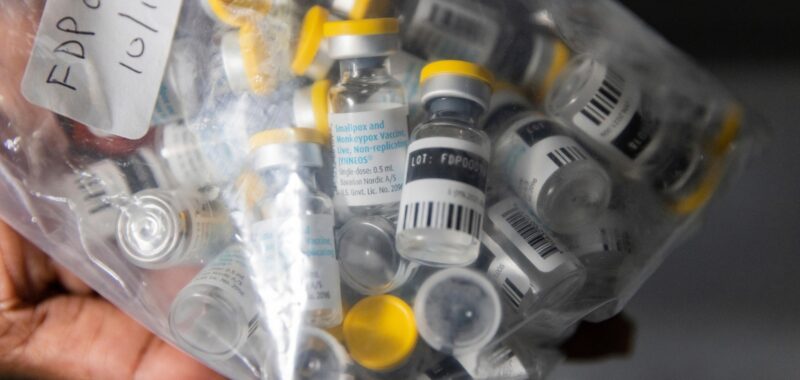BANGUI, Central African Republic — African health officials said mpox cases have spiked by 160% in the last year, warning the risk of further spread is high given the lack of effective treatments or vaccines on the continent.
The Africa Centers for Disease Control and Prevention said in a report released Wednesday that mpox, also known as monkeypox, has now been detected in 10 African countries this year. Burundi and Rwanda both reported the virus for the first time.
The Central African Republic was the first to confirm a new outbreak on Monday, saying it extended to its densely populated capital, Bangui.
“We are very concerned about the cases of monkeypox, which is ravaging region 7 of the country,” the Central African Republic’s public health minister, Pierre Somsé, said Monday.
On Wednesday, Kenya’s Health Ministry said it found mpox in a passenger traveling from Uganda to Rwanda at a border crossing in southern Kenya. In a statement, the ministry said that a single mpox case was enough to warrant an outbreak declaration.
Of the more than 14,000 cases reported to the Africa CDC, more than 96% of cases and deaths are in Congo. Earlier this year, scientists reported the emergence of a new form of mpox in a Congolese mining town that they feared might spread more easily among people. Mpox spreads via close contact with infected people, including via sex.
The Africa CDC said the mpox death rate, at about 3%, “has been much higher on the African continent compared to the rest of the world.” During the global mpox emergency in 2022, fewer than 1% of people infected with the virus died.
The version of mpox seen in Congo can kill up to 10% of people infected. The center noted that both of the mpox cases in Rwanda had been in Congo before testing positive.
An analysis of patients hospitalized from October to January in eastern Congo suggested that recent genetic mutations in the virus were the result of ongoing spread in people.
Unlike in previous mpox outbreaks, where lesions were mostly seen on the chest, hands and feet, the new form of mpox causes milder symptoms and lesions mostly on the genitals, making it harder to spot.
The Africa CDC said nearly 70% of cases in Congo are in children younger than 15, who also accounted for 85% of deaths. The agency said the number of deaths across the continent has jumped by 19% since last year.
The medical charity Doctors Without Borders called the expanding mpox outbreak “worrying,” noting the disease had also been seen in camps for displaced people in Congo’s North Kivu region, which shares a border with Rwanda.
“There is a real risk of explosion, given the huge population movements in and out,” said Dr. Louis Massing, medical director for Congo at Doctors Without Borders.
Mpox outbreaks in the West have mostly been shut down with the help of vaccines and treatments, but barely any have been available in African countries including Congo.
“We can only plead … for vaccines to arrive in the country and as quickly as possible so that we can protect the populations in the areas most affected,” Massing said in a statement.
In May, WHO said that despite the ongoing outbreak in Africa and the potential for the disease to spread internationally, not a single donor dollar had been invested in containing mpox.
Earlier this week, the Coalition for Epidemic Preparedness Innovations announced it was starting a study in Congo and other African countries next month to see if giving people an mpox shot after they had been exposed to the disease could help prevent severe illness and death.
___
Cheng reported from London. Chinedu Asadu in Abuja, Nigeria contributed.
___
The Associated Press Health and Science Department receives support from the Howard Hughes Medical Institute’s Science and Educational Media Group. The AP is solely responsible for all content.

